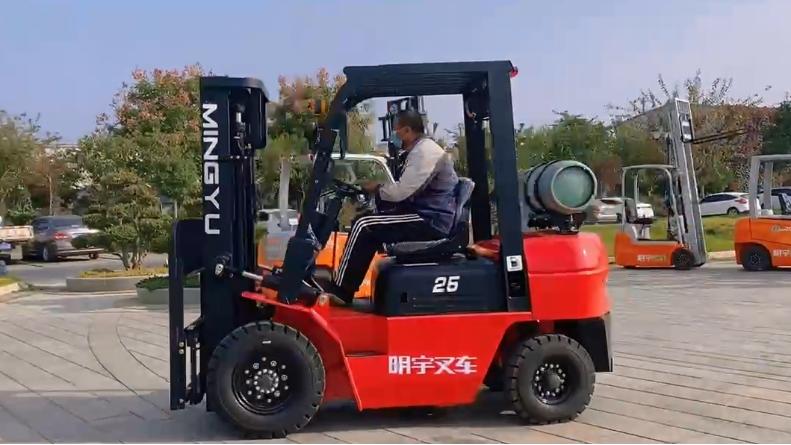Are Dual-Fuel Forklifts Safe for Indoor Use?
1. Introduction
Forklifts are essential machinery in warehouses, factories, and distribution centers. They come in various types based on fuel sources: electric, diesel, propane (LPG), and dual-fuel. Dual-fuel forklifts typically run on a combination of propane and gasoline or propane and diesel, offering flexibility and power. However, safety concerns often arise regarding their use indoors due to emissions and fuel handling.
This article explores whether dual-fuel forklifts are safe for indoor use, examining their operation, emissions, regulatory guidelines, and best safety practices.
2. What Are Dual-Fuel Forklifts?
Dual-fuel forklifts operate on two types of fuel, usually propane and gasoline or propane and diesel. They can switch between fuels depending on availability or operational needs. This dual system provides greater power and extended run times compared to single-fuel forklifts.
These forklifts are popular in mixed indoor-outdoor operations, offering versatility for various environments.
3. Indoor Use Considerations for Forklifts
Indoor forklift operation differs from outdoor use primarily due to ventilation and confined spaces. Forklifts operating indoors must minimize harmful emissions to protect worker health. Regulatory bodies such as OSHA set standards governing forklift emissions and safety in enclosed environments.
Proper ventilation, equipment maintenance, and operator training are critical factors in safe indoor forklift use.
4. Emissions and Air Quality
Dual-fuel forklifts emit carbon monoxide (CO), nitrogen oxides (NOx), and particulate matter. While propane burns cleaner than diesel or gasoline, emissions still accumulate in poorly ventilated indoor spaces, posing health risks.
Compared to electric forklifts, dual-fuel models produce more emissions but generally less than diesel-only forklifts. Ensuring adequate ventilation is essential when operating dual-fuel forklifts indoors.
5. Fire and Explosion Risks
Handling fuels like propane and gasoline indoors carries fire and explosion risks. Leaks or spills can create hazardous atmospheres. Modern dual-fuel forklifts include safety features such as sealed fuel tanks, automatic shut-off valves, and leak detection sensors.
Strict protocols for fuel storage, refueling, and equipment inspection reduce these risks significantly.
6. Operational Safety Practices
To maximize safety indoors, operators should be well-trained on:
Proper forklift handling and maneuvering in confined spaces.
Safe refueling procedures, including ventilation during fueling.
Routine equipment inspections focusing on fuel system integrity.
Monitoring indoor air quality and ensuring ventilation systems function effectively.
7. Advantages and Limitations of Dual-Fuel Forklifts Indoors
Advantages include:
Flexibility to use different fuels.
Higher power output compared to electric forklifts.
Longer operating times without recharging.
Limitations include:
Emissions requiring ventilation.
Potential fire hazards from fuel storage and handling.
Regulatory restrictions in some jurisdictions.
Dual-fuel forklifts suit facilities with robust ventilation and mixed-use environments but may be less ideal for strictly indoor settings with poor airflow.
8. Case Studies and Real-World Examples
Several warehouses have successfully integrated dual-fuel forklifts indoors by upgrading ventilation and enforcing strict safety protocols. These examples highlight the importance of facility design and operational discipline.
9. Emerging Technologies and Alternatives
Advances in low-emission dual-fuel engines, hybrid forklifts, and battery technology offer safer indoor alternatives. Electric forklifts remain the cleanest option for enclosed spaces, while innovations continue to reduce emissions from internal combustion engines.
10. Conclusion
Dual-fuel forklifts can be safe for indoor use when operated under stringent safety standards, including proper ventilation, regular maintenance, and trained operators. While they offer flexibility and power, facilities must carefully assess environmental controls and regulatory compliance before use.
Post time:Jul.10.2025



